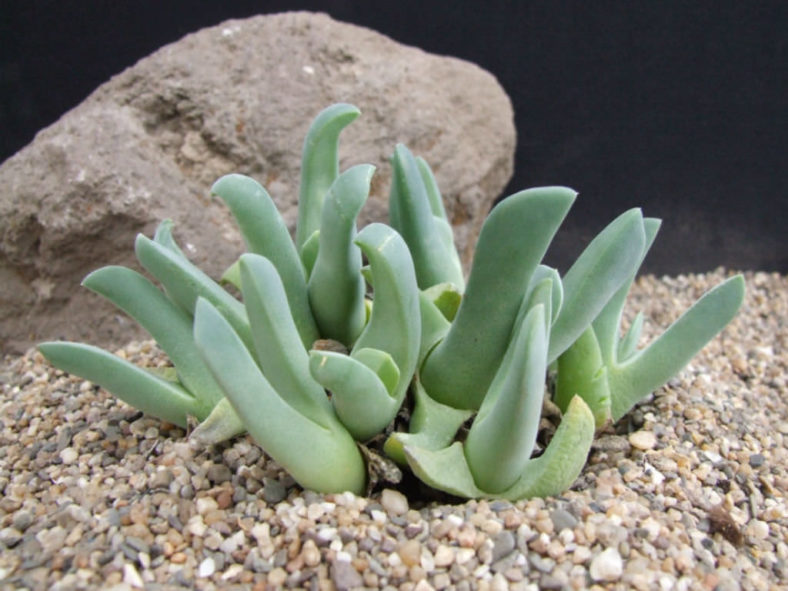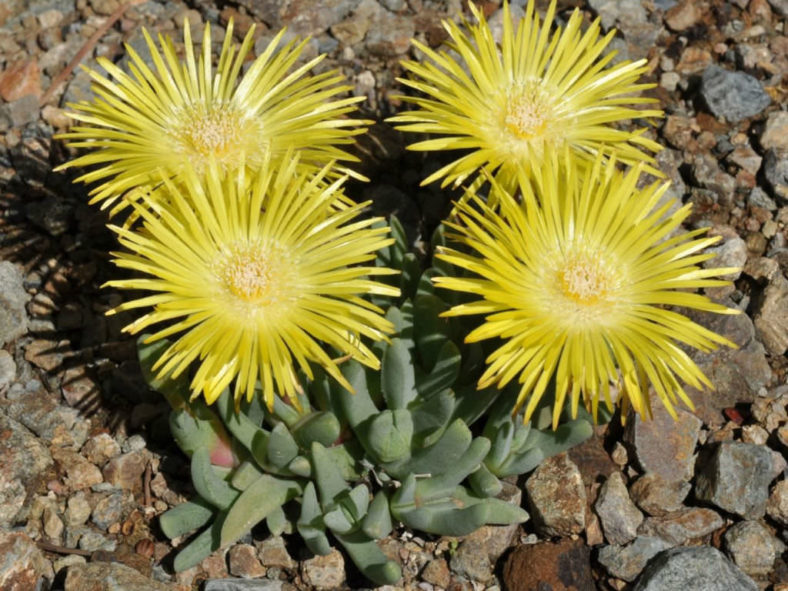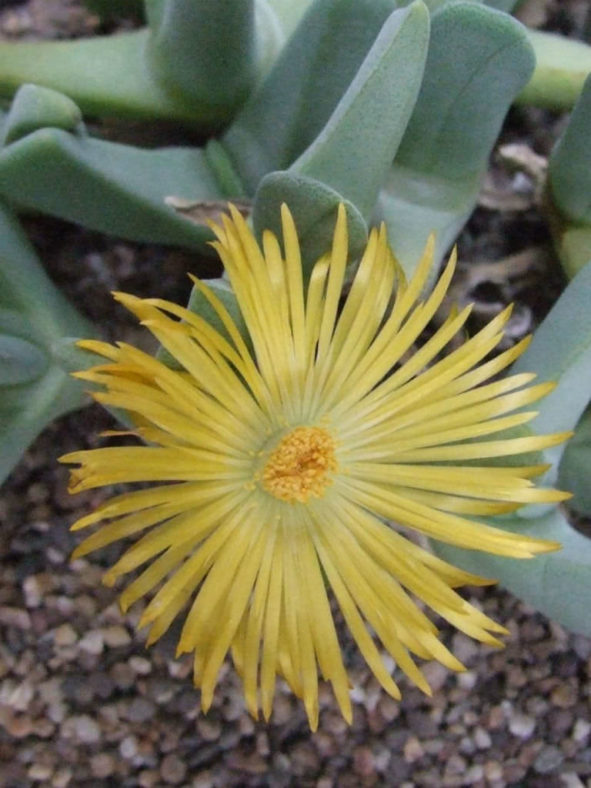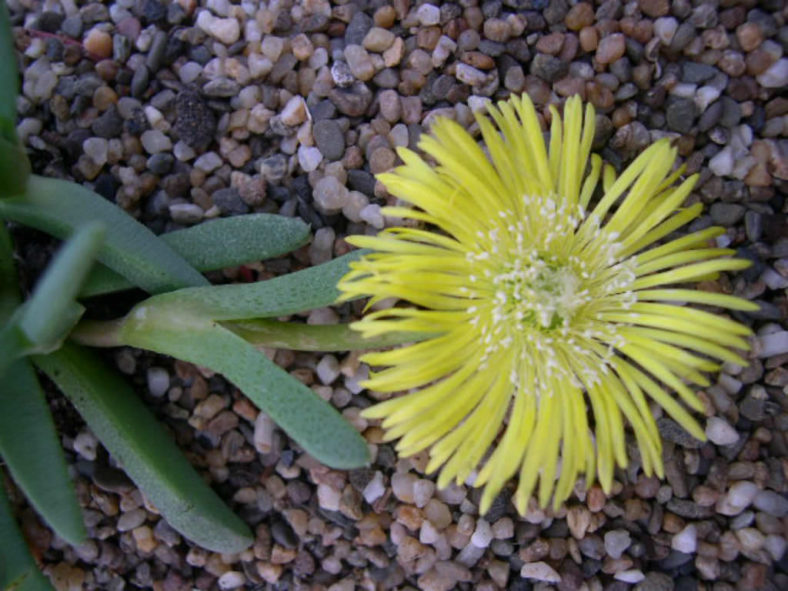Scientific Name
Cheiridopsis rostrata (L.) N.E.Br.
Synonym(s)
Mesembryanthemum rostratum
Scientific Classification
Family: Aizoaceae
Subfamily: Ruschioideae
Tribe: Ruschieae
Genus: Cheiridopsis
Etymology
The specific epithet "rostrata" (pronounced ro-STRAY-tuh) means "beaked, beak-like" and refers to the shape of the leaf pairs of this species.
Origin
Cheiridopsis rostrata is native to South Africa. It occurs on granite outcrops from Rietpoort and Vredenburg to Hopefield in the Western Cape province.
Description
Cheiridopsis rostrata is a small succulent with pairs of fleshy, upright, pale greenish-grey, translucently spotted leaves that blush by early summer. It grows up to 3.2 inches (8 cm) tall and 7.2 inches (18 cm) in diameter, forming a dense clump as it matures. One or two new leaf pairs emerge from branch tips each year. The old leaf pairs dry out, creating a cylindrical, papery sheath that covers the succeeding pairs.
The flowers are usually solitary, daisy-like, with numerous narrow, yellow petals that fade to red and appear on long, slender stalks in winter. The fruits are 8- to 9-locular capsules.
Cheiridopsis rostrata has a similar appearance to Cheiridopsis namaquensis but grows in a wetter climate.

Hardiness
USDA hardiness zones 10a to 11b: from 30 °F (−1.1 °C) to 50 °F (+10 °C).
How to Grow and Care
Mesembs are mostly adapted to relatively predictable rainfall patterns rather than extreme drought and irregular rainfall. Total rainfall may be extremely low, but water is available at least seasonally or through fog and condensation. This leads to or allows plants that are not especially large, sometimes very small, and affects how they need to be treated in cultivation.
The basics of care are simple: free-draining soil, plenty of sun and ventilation, and regular light watering in the right season. The difficulties are endless, trying to adapt to the Mesembs' adaptability and follow their growth habits in your particular conditions.
These plants require a loam-based compost with extra drainage material such as horticultural grit or perlite. They all like good light conditions and plenty of ventilation.
Some are relatively cold-hardy and can even survive mild winters outside. Most will survive temperatures down to the freezing point. Some Mesembs start growing in the fall as the temperature drops and the days get shorter.
Learn more at How to Grow and Care for Mesembs.
Links
- Back to genus Cheiridopsis
- Succupedia: Browse succulents by Scientific Name, Common Name, Genus, Family, USDA Hardiness Zone, Origin, or cacti by Genus
Photo Gallery
Click on a photo to see a larger version.


